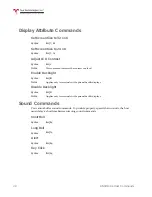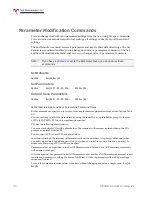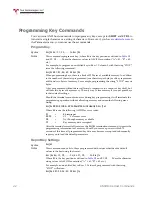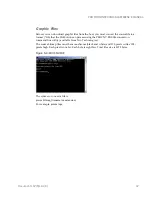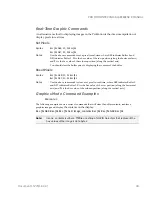
ANSI Mode Host Commands
44
Custom Character Commands
You can customize most display characters in both the ASCII Character set and the
ProMotion Extended Character set as defined in
, with the exception of
characters with hex values 00 through 20 and 80. A working knowledge of binary and
hexadecimal notation is helpful for use of this feature.
Program Custom Character
Syntax
Esc [5z Cn; R1; R2; . . . Rn Esc [0z
Notes
This command is case sensitive, where Cn is the character number as defined in one of
the character sets found in
, and R1; R2; . . . Rn represent the corresponding
row numbers for either a 16 x 32 screen (8 rows) or a 24 x 8 screen (16 rows) which
contain ASCII hexadecimal characters (see Examples).
To display user characters, you must set the Data Bits parameter to 8 and enable Echo.
You can then send the Esc [5z command to the terminal or program a key to output the
character. For example, to program the F1 key to display Character C1, you would
define the key output value as Hex 81.
When programming custom characters, you must have the correct screen size set. If
you switch display modes, the characters will not appear.
Examples
Program Character C1 as a box for a 16 x 32 Screen
Bit 7 6 5 4 3 2 1 0 Hex
R1
1 1 1 1 1 0 0 0 F8
R2
1
0
0
0
1
0
0
0
88
R3
1
0
0
0
1
0
0
0
88
R4
1
0
0
0
1
0
0
0
88
R5
1
0
0
0
1
0
0
0
88
R6
1
0
0
0
1
0
0
0
88
R7
1
1
1
1
1
0
0
0
F8
R8
0
0
0
0
0
0
0
00
Legend:
F
Bit on,
F
Bit off ,
F
Bit ignored
Esc [5z C1; F8; 88; 88; 88; 88; 88; F8; 00 Esc [0z
Bit 7 of each byte represents the leftmost column of the character.
As shown above, the hex values for the high order and low order byte are
concatenated; the results are the values entered for each row (for example, F8h =
11111000).









